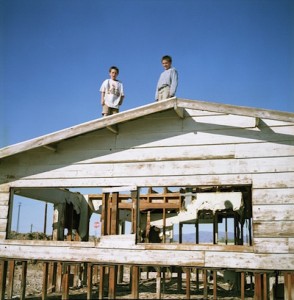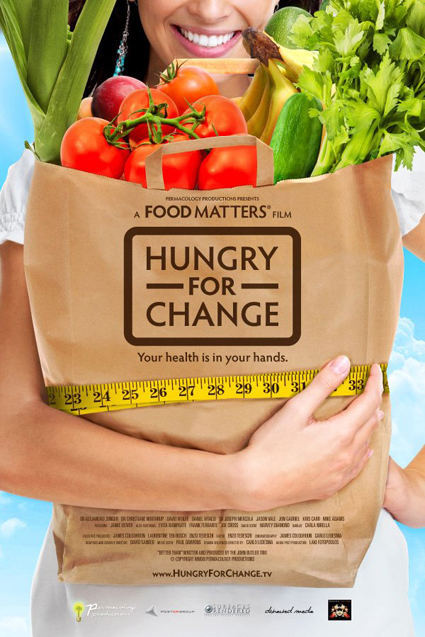By Bob Moczydlowsky
The following post was originally published on TopSpinMedia.com.

Sure has been a lot of talk about movies around here lately, huh? 
This morning, the Sundance Institute announced an expansion of their incredibly forward-thinking Sundance Artist Services program, and we at Topspin are honored to be included alongside distribution outlets iTunes, Amazon, YouTube, Hulu, New Video, Netflix and Sundance Now as the provider of Direct-To-Fan Marketing and Distribution tools. We’re humbled to have our first major expansion outside of music to be with such a storied and benevolent institution, and we’re quite literally stoked to start helping Sundance filmmakers connect with fans and create new channels for their amazing work.
This quote from Robert Redford really says it all:
“When I founded the Institute in 1981, it was at a time when a few studios ran the industry and an artist’s biggest concern was whether their film would get made,” Redford said. “Technology has lessened that burden, but the big challenge today is how audiences can see these films. The Artist Services program is a direct response to that need. We’re not in the distribution business; we’re in the business of helping independent voices be heard.”
If you’d like to read the official press release, you can DOWNLOAD HERE.
In addition to the expansion of the Artist Services program today, Sundance also launched an online alumni community containing blog posts and essays from some of the brightest and bravest minds in indie film, like Tim League and Ted Hope. The goal is to provide a place where Sundance artists can share data and advice, and interact with distributors, technology partners and each other. Somehow, I managed to sneak my two cents in there, too. Below is a reprint of my “Direct-To-Fan Keynote” that appears inside the Sundance Artist Services site.
My hope is that all filmmakers find it useful. Please share it liberally.
You can it download it as a VIDEO or as a PDF.
Hello. My name is Bob.
I’m here to talk about Direct-to-Fan Marketing (D2F) and Distribution. I work at a software company called Topspin. We’re honored to be a part of Sundance Artist Services.
Topspin makes software used by
Kevin Smith, David Lynch, Ed Burns, Trent Reznor, Arcade Fire and thousands of other artists to sell downloads, merchandise, tickets and memberships directly to fans. Our company mission is to create an artistic middle class, and we’re doing it by building a self-serve application you can use to market and distribute your work yourself.
You may think I mean self-release. Or DIY Distro. Or “creative” distribution. But those are not the same as Direct-to-Fan. What I’m talking about is a distribution and marketing strategy that should be a part of every filmmaker’s career. I’m talking about making sure you are directly connected to your core audience. I’m talking about selling premium products to super fans. And I’m hoping to persuade you to treat your audience like your most important asset. It is time to invest in your fans.

Here’s the problem I see: Filmmakers have been taught to be wholesalers, not retailers. Filmmakers make films — so the teaching goes — and then it is the job of distributors to market and distribute films.

There is actually a stigma attached to doing it oneself, as if every direct release was a sign not of true independence and autonomy but instead an indicator of the film’s quality or filmmaker’s professionalism. “Did you hear about XX film? They couldn’t get distribution. They have to self-release.” Sounds familiar, right? The goal is to make films and sell them to distributors. That’s the model.

That shit is broken. Permanently. I mean it. Yes, the “traditional model” still exists as a best-case outcome for a few films. But most likely not for your film. Sorry. Just being honest. It’s time to stop calling the best-case, long-shot, home-run option “the model”. Let’s get realistic about what’s happening:

Everyday, the odds of the traditional indie model working for your film get longer and longer. Even at Sundance, upwards of 80 percent of the films fail to find traditional distribution deals. A ton of interesting and excellent films don’t reach audiences and fail to grow the careers of the artists who made them. That’s sad. And yet, more and more excellent films get made everyday. Because technology makes production easy.

And the Web makes distribution easy, too. My phone will shoot video and upload to YouTube. Production and distribution is in your pocket! But here’s where the trouble starts: Free content, empowered fans and unlimited choice make marketing very, very hard. Fans can watch and share all day, effortlessly. But competing for their attention is really tough. Fans who want to watch a movie used to choose from the 10 films at the theatre on Friday night. Now they choose from the entire historical catalog of filmmaking on their laptops, phones, set-top boxes or VOD services. Or they skip the film altogether and play Words With Friends online. Think about your own habits. Getting fans to pay attention is harder than it has ever been.

“So, how will anyone see my work?” you ask. It’s simple, actually. You need to grow a database of fans, and market to them. Here’s how you do it:
First, make amazing films. I don’t mean pretty-good films, or better-than-average films… I mean INCREDIBLE films. Invest in quality, and invest in new. New sells. But also please make sure to budget appropriately, based on the size of your audience. Don’t have an audience? Then keep the budget LOW.

Second, give away free downloads in exchange for connection via email, Facebook and Twitter. This might mean a soundtrack, or the opening scene of the film, or some killer making-of footage. The point is to get fans excited, connected and sharing. You can’t make dollars until you have fans, and giving away incredible content is the best way to attract new fans.
Third, offer premium products fans actually want to buy, and sell these premium products at a mix of price points FIRST. Many of the folks who will end up with the $2.99 rental on iTunes would be even happier with a great-looking shirt, HD download, photo book and a Skype-call-with-the-lead-actress for $75. Don’t miss the opportunity to convert your core demand into a high-revenue product. Get creative with your products and your prices. You’ll earn more money and create happy fans who spread the word online.

Now, once you’ve grown your database and you can monetize your core fans, it’s time to look around for distribution partners. If you can prove there is demand for your art, you will have traditional distribution opportunities. But long-term success requires reversing the common logic:


Direct-to-Fan is NOT the last resort. Direct-to-Fan is the foundation of your career. Think about this way: Imagine your career is a ladder.


Each rung represents more audience paying attention to your work. Which rung are you on? For the sake of example, let’s say the ladder has 100 rungs. On rung 100 is Steven Spielberg, smiling down from the top. At rung zero is every first-time filmmaker just trying to get a project made. At rung 25 is someone like Miranda July (one of my personal favorites) and at rung 75, someone like Kevin Smith, who has a rabid fan base and relative autonomy.

Everyone starts at the bottom. From rung zero to 25, Direct-to-Fan will likely be 100 percent of your income. You won’t have traditional distribution offers, so you’ll do it all yourself. If you do it well, your audience will grow and you’ll move up the ladder. Once you start climbing, you become much more attractive to potential partners.
In the middle, you’ll mix it up. From rung 25 to 75, the mix of Direct-to-Fan income and other distribution deals will vary depending on the project.

You’ll have to license rights to move much past 25, but you’ll do it in a way that allows you to retain your control of your core audience and monetize them via premium products you control.
At the top, you’re really in control. If you make it to rung 75 or higher, Direct-to-Fan will start trending back toward a larger percentage of your revenues.

You’ll have a dedicated, connected following, and you’ll want as much creative control over your fan experience as possible. Read Kevin Smith’s Red Statements for a perfect example of this return to Direct-to-Fan in action. Sure, he’s done deals, too… but on his terms and with his audience as the top priority. In music, we’re seeing well-run D2F campaigns with top-tier artists earn 15 to 35 percent of gross revenues — and the lion’s share of the profits. There is no reason those numbers can’t be replicated in film. And during this year.

And there are many more practical examples out there, too. The film Broke* is giving away its soundtrack to grow its database. NYC filmmaker and musician Cory McAbee opted to take his serialized film Stingray Sam out exclusively via Direct-to-Fan, and he gets you hooked on the first two episodes before asking for your money.
Ed Burns has killer posters and t-shirts bundled with downloads of his new film Newlyweds, and William Morris and Barry Ptolemy have created a killer Direct-to-Fan experience for the Ray Kurzweil doc Transcendent Man.


With a database of fans, you can raise money on Kickstarter, sell premium products and ticket your own event screenings with a director Q&A. Like Kevin Smith is doing RIGHT NOW, TODAY. But most importantly… you’ll be able to RETURN to the same group of core fans for all of your future products. Build an audience. Build a brand. Always compare the money you’re offered to the value of your fan database down the line.
You may find that you’re better off keeping your film under your control than doing that no-advance, all-rights distro deal. Especially if we’re talking about short films!
Now, I know I’m getting long-winded, so I’ll wrap it up.
Here’s the summary: It’s time to make Direct-to-Fan Marketing the foundation of your career. It’s time to assume your films will be marketed by you, not acquired in a Sundance bidding war. It’s time to start building a database of core fans that you own and nurture throughout your career.

Stop calling it Self-Release. Stop calling it DIY Distribution. It’s called Direct-to-Fan Marketing, and it works for filmmakers at every rung on the ladder.


Direct-to-Fan Marketing is:
– Growing your email, Facebook and Twitter database by giving away free downloads and encouraging sharing
– Maintaining a great website that sells merch, downloads, memberships and tickets directly
– Owning your fan marketing data, and using it to raise money and promote your work throughout your career

Good Direct-to-Fan Marketing will make you more attractive to distributors. But you may find yourself telling them “No, thanks.” Your audience is your biggest asset. If you sell it, make sure you get full price.
Questions? I’m accessible. Let’s chat.
Thumbs up for rock ‘n’ roll,
-bob
@bobmoz
VP, Product & Marketing
Bob Moczydlowsky has been kind enough to offer HOPE FOR FILM readers his service for free:
The code HOPEFORFILM entitles you to three free months of Topspin Plus, the most powerful direct-to-fan platform on the planet.
Topspin empowers you to:
– Promote your film across websites, social networks and mobile devices
– Connect with fans and offer free downloads for emails, Likes & Tweets
– Customize your store & sell digital media, physical items, tickets and more
To redeem your free account, go to topspinmedia.com and submit your email. Follow the instructions in the email to create your account, and then click “Upgrade” in your account header. Scroll down and enter this code: HOPEFORFILM
 As a moviegoer, I like to keep an open mind, but I also have a crisp understanding of what I like. Because I know this, I know there are other people who share my understanding and also like what I like. How do I know this? I see them leaving a theater as happy as I am about having watched a great film, sharing what they felt, taking that positive experience home with them. Knowing this affords me comfort in the simplest approach as a filmmaker. I write the types of stories that I would want to see and steer clear of pandering to a potential audience.
As a moviegoer, I like to keep an open mind, but I also have a crisp understanding of what I like. Because I know this, I know there are other people who share my understanding and also like what I like. How do I know this? I see them leaving a theater as happy as I am about having watched a great film, sharing what they felt, taking that positive experience home with them. Knowing this affords me comfort in the simplest approach as a filmmaker. I write the types of stories that I would want to see and steer clear of pandering to a potential audience.





























